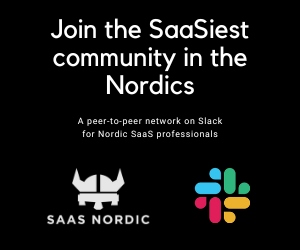Ever felt like your B2B SaaS operations could use a little magic? Enter RevOps – a game-changing approach that’s transforming how companies scale and succeed. Evelina Petrova-op den Kelder, the Head of Revenue Technology at Adyen, knows the ins and outs of this strategy. With her experience in high-growth tech, she reveals how a smartly designed RevOps framework can increase operational efficiency and foster sustainable growth. Ready to dive into the future of SaaS? Let’s explore how RevOps can be your secret weapon.
At the heart of RevOps lies a structured foundation built on several key pillars:
- Operations: The backbone that supports overall efficiency.
- Technology: Tools that facilitate better performance and collaboration.
- Analytics: Data-driven insights that guide decision-making.
- Enablement: A crucial element often overlooked; ensuring every team member is equipped with the right tools and knowledge, especially as organizations scale.
Strategic vs. Non-Strategic RevOps
One of Evelina’s key insights is how RevOps evolves within organizations. Many companies start their RevOps journey as reactive “order-takers,” primarily focused on execution rather than strategy. However, for companies to genuinely transform their operations and achieve sustainable growth, there must be a shift toward a proactive, strategic approach.
This strategic model is built on collaboration across departments, where teams unite towards common goals rather than compete for resources. It’s a gradual transformation -organizations move from operating in silos to developing a more integrated, cohesive strategy as they mature. This evolution is essential for leveraging the full potential of RevOps and driving meaningful business outcomes.
RevOps evolves as a company matures, adapting to different stages of growth. In the early phase, it’s focused on survival, where basic systems are managed to keep operations running. As the company scales, functions become more defined, and RevOps starts to integrate core areas like sales, marketing, and customer experience. The goal is greater alignment, but it doesn’t become truly strategic until later. At its highest level, RevOps drives data-driven decision-making, helping leadership steer the company towards long-term growth.
Here’s a breakdown of the different stages:
- Level 1 (Sales Admin): Focused on survival, where a solid profile manages systems.
- Level 2 (Siloed Ops): Defined functions, but lacking cohesion.
- Level 3 (Emergence of RevOps): Integration of sales, customer experience, and marketing functions.
- Level 4 (Centralized RevOps): Greater alignment but not necessarily strategic.
- Level 5 (Strategic RevOps): Full strategic engagement when leadership actively seeks data-driven insights to drive decisions.
To successfully implement RevOps, it’s essential to follow a structured approach that integrates cross-functional collaboration and strategic planning.
- Educational phase: First, build awareness within teams by educating them on RevOps’ purpose and impact. It’s about ensuring everyone understands the value RevOps brings to the business.
- Coalition of the willing: Next, form a group of committed individuals from various departments, united to tackle the company’s biggest initiatives. Collaboration is key here, as RevOps needs buy-in across functions like sales, marketing, and customer success to be successful.
- Executive buy-in: Securing support from leadership is crucial for long-term success. Executives need to align with RevOps’ vision and agree on KPIs that measure its progress. When leadership is on board, RevOps has the authority to drive meaningful change and shift how the business operates.
- Navigating with empathy: Organizational changes can create resistance. Leading RevOps implementation requires empathy—understanding employees’ concerns, communicating the benefits of changes, and guiding teams through transitions smoothly.
- Finding quick wins: To build momentum and validate the RevOps function, identify low-hanging fruits that can be solved quickly. These early wins not only demonstrate RevOps’ effectiveness but also help to build trust and buy-in from the broader organization, paving the way for tackling larger, more complex challenges later on.
To effectively drive efficiency in RevOps. Evelina highlights that the journey is gradual, requiring a methodical approach and teamwork across departments. Here’s how organizations can navigate this transformation:
- Overcoming siloed functions in GTM strategy: Align departments through common goals, metrics, and priorities, driving growth via collaboration.
- End-to-end visibility & accountability: Maintain a holistic view of the revenue funnel, improving performance tracking from lead generation to retention.
- Data-driven decision-making: Consolidate data into a single source of truth, enabling continuous optimization of strategy.
- Enhancing customer experience: Ensure RevOps improves customer journeys, not just internal processes.
- Unifying the tech stack: Build scalable systems, processes, and infrastructure that evolve with the business.
- Continuous improvement & iteration: Adapt strategies based on informed decisions in rapidly changing environments.
Exploring the why, who, what and how
Let’s dive into the rationale behind Adyen’s transformation, exploring the why, who, what and how of our RevOps journey. Adyen defined their why with the statement below.
The key players in this journey is a big part of their “who” and include the various commercial functions within Adyen and the end-users who interact with their systems. Their insights are crucial for ensuring solutions effectively meet user needs.
The core initiatives to identify their what involved adopting an ARR model with clear objectives and key results, ensuring at least 30% of new features are shaped by customer insights. This strategic approach helps align innovations with market demands.
How did Adyen achieve this? By employing the Commercial Engine and the Double Diamond approach to minimize duplicated efforts and enhance collaboration. This framework allows for continuous improvement and innovation while maintaining a focus on user needs and strategic goals.
Key takeaways from Evelina
To summarize, here are Evelina’s key takeaways on what to do and what to avoid when working with revenue operations:
What to do:
- Have a knowledgeable leader in charge of RevOps.
- Seek external help when needed; Evelina did so strategically.
- Prioritize strategy and data architecture.
- Foster prioritization as an ongoing practice.
- Focus on change management and performance management.
What not to do:
- Avoid operating solely as a system administrator.
- Don’t rush into strategic initiatives prematurely.
- The reporting structure for RevOps is flexible; focus on finding supportive leaders.
- Ensure execution involves champions.
- Leverage data to stay competitive and optimize performance.
By embracing these principles, SaaS companies can significantly enhance operational efficiency and navigate the challenges of today’s competitive landscape effectively.





